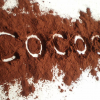Study on Nootropic Mechanism of Clausenamide
Abstract
Clausenamide is a compound isolated from clausena lansium (lour) skells.
(±) 、 (+) and (-) clausenamide were synthesized firstly in our institute. In the previous study, Clausenamide was shown to improve consolidation of memory impaired by anoxia and 〓. In this study, one way of passive avoidance response such as step down and step through tests and water maze test were used for comparison of effects of (±) clausenamide、 (-) clausenamide and piracetam on learning and memory and memory impairment induced by anisodine and 〓 in adult mice. Meanwhile, observation was also made for their effect on body and brain development in weaning mice.
Computer-molecular modeling analyses was used to identify the nootropic potency of piracetam and (±) 、 (-) clausenamide. The other methods and techniques used in present study include measurement of neurotransmitters, secondary messengers (〓, cAMP, cGMP, PKC, 〓) , membrane ion pump (〓ATPase, 〓ATPase) , ion channel, hippocampal slices potential, quantitative analysis of synapses and activity-dependent synaptic plasticity.
一. Comparison of effects of piracetam and (±) 、 (-) clausenamide on learning and memory given by single or multiple doses in mice.
Piracetam and (±) 、 (-) clausenamide were given once or multiple dosage by i. p. or i. g. to mice for observation of their effects on learning and memory in the step-down and step-through and water-maze tests as well as their effect on amnesia impaired by anisodine and 〓. The results showed that piracetam、 (-) clausenamide、 (±) clausenamide had no effect on acquisition of memory in step-down and step-through tests in normal mice, while they siginificantly reduced number of errors and time needed to reach the destination in amnesia model induced by anisodine and 〓 in water maze test. Their effective dose for piracetam, (±) and (-) clausenamide was 500mg/kg, 100mg/kg and 10mg/kg respectively. Among which (-) clausenamide showed the most potent effect.
二. Computer-molecular modeling analyses of piracetam and clausenamide structural characteristics
Six kinds of nootropics (piracetam and its analogues) structure properities were analysized. Results indicated that they all possessed O=C-C-N-C=O group, suggesting that it may be the pharmacolophore of nootropics.
(-) Clausenamide showed good superposition with piracetam, the root mean square (RMS) value for least-square superposition of piracetam and (-) clausenamide was 0.298, while the RMS for piracetam and (+) clausenamide was 0.780. Using computer hydrophobic analyses, it was shown that piracetam has much stronger hydrophilicity around its pharmacolophore, (-) clausenamide possesses not only hydrophilicity pharmacolophore, but alse stronger hydrophobicity around two phenyl rings which is helpful for clausenamide to penetrate CNS through blood-brain barrier and reach target.
三. Study on the nootropic mechanism of clausenamide
There is a close relationship between monoamines and learning and memory. NE and dopamine are believed to have a role in facilitation of memory. For this, an observation of clausenamide on monoamines and their metabolites as well as monoamine oxidase B activity was carried out.
Successive oral administration of clausenamide at dosage of 30, 150mg/kg d-1 for 4 day. Norepinephrine (NE) , dopamine (DA) , serotonin (5-HT) and their metabolities DOPAC, HAV, 5HIAA in mouse cerebral cortex were measured by HPLC -ECD. The result showed that clausenamide at dosage of 30mg/kg could increase the DA content significantly.
150mg/kg of clausenamide caused an increase in content of NE, DA, 5-HT, while their metabolities DOPAC and 5HIAA decreased. Clausenamide had no obvious effect on monoamine oxidase B activity using HPLC-UV detector, indicating that increment of monoamines may involves another mechanism of action. The increase of monoamine induced by clausenamide could be attributed to its increase of intracellular 〓.
This may be the biological bases for elucidating the facilitation of memory induced by clausenamide.
Long-term potentiation (LTP) is a form of synaptic plasticity which can be elicited by a short chain of electrical pulses of 100HZ stimulation for 1-2sec at moderate intensity. By using extracellular record, we have examined the effect of (-) clausenamide on potential spike (PS) and LTP in rat hippocampus slices. It was found that (-) clausenamide could increase PS and LTP amplitude markedly.
It is well known that calcium is an intracellular secondary messenger which plays a role in the development, proliferation, differentiation of cells and induction of learning, memory and LTP. The effect of (-) clausenamide on cytosolic 〓 level was measured in dissociated neonatal brain cells using Fur-2/AM- a fluoresent calcium indicator.
Results showed that 10, 100μmol/L of clausenamide induced a rapid increment of intracellular 〓 in dose -dependent manner. In addition, (-) clausenamide could increase cAMP content and elevated 〓ATPase activity, but had no any effect on cGMP content and 〓ATPase activity in rat brain synaptosome.
Using fluorometer method (-) clausenamide was shown to promote 〓-depentent and 〓-indepentent release of glutamate in guinea pig's cerebral cortical synaptosomes.
(-) Clausenamide could activate PKC activity of rat brain in prescence and abscence of DG in vitro, indicating that (-) clausenamide affect directly on PKC activity. Using 〓 -inositol, (-) clausenamide was shown to increase 〓 content in dose-dependent manner in rat hippocampal slices, As a result more calcium will be released from 〓 store.
In another study, the effects of clausenamide on the voltage-dependent potassium channels in isolated rat ventricular myocytes was observed with patch clamp whole cell recording technique. It was found that clausenmide reduced steady state-outward current and prolonged action potential duration in rat ventricular myocytes.
Administration of (-) clausenamide at dosage of 5, 10, 20mg/kg to weaning mice for 4 weeks. reduced gain of body weight was seen in the first week, but there was no difference in the gain of body weight between control and medicated groups in the next three weeks. It is interesting that chronic administration of (-) clausenamide induced facilitation of learning and memory in step down and step through tests. In the mean time, thickness of cerebral cortex and synapses density in the hippocampal 〓 region increased significantly.
In summary, clausenamide could improve memory impairment induced by anisodine and 〓. In water maze test and administration of clausenamide for 4 weeks, facilitation of memory or increase of learning ability in normal mice was also seen. Among (±) 、 (-) and (+) clausenamide, (-) clausenamide showed most potent effect.
Its nootropic effect was 50 times more potent than piracetam. This result was accordance with computer -molecular modeling analysis. The study on nootropic mechamism indicated that (-) clausenamide raised intracellular 〓 by increase of calcium influx and calcium release from calcium store. In the mean time, (-) Clausenamide increased 〓-dependent and 〓 -independent glutamate release. Both induced a series of physiological events such as increment of monoamines, PKC activity, synaptic effecacy and structureal plasticity, All of these events will finally lead to formation of LTP and facilitation of memory.
In summary, (-) clausenamide facilitated learning and memory; improved amnesia impaired by 〓 and anisodine; increased monoamines, promoted influx of calcium and 〓 release from calcium store; increased cAMP content and glutamate release in rat synaptosome; enhanced PS and Long term Potential (LTP) ; activated PKC and 〓ATPase activity; inhibited state-outward potassium current; prolonged action potential duration (APD) ; increased synapses density in hippocampus 〓 region, From these results, (-) Clausenamide is considered to be a promising nootropic agent.




























































